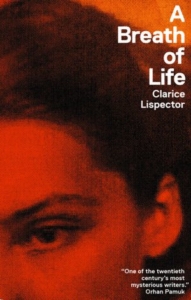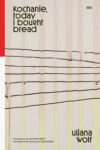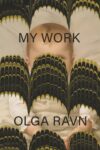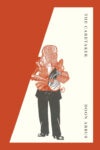Tr. Johnny Lorenz
In Clarice Lispector’s novel A Breath of Life, fiction becomes a method for living in time — that is, a method for dying. The novel insistently invites the reader to contemplate the intimate paradox of time which Angela Pralini, the book’s ostensible protagonist, equates with the divine: “Do you know what God is? God is time.”
Angela is one of only two characters in the book; the other, “Author,” is the man who invents her, writes her, and engages in dialogue with her and with the reader, asking: “When Angela thinks of God, is she referring to God or to me?” Should readers consider the “God” to whom both Angela and the author pray to be the late Clarice Lispector herself? And if so, is God (or time) already dead?
Lispector is fascinated by the ambiguity between character and author, creator and created; she wrote A Breath of Life concurrently with her novel The Hour of the Star, and in both books she puzzles over versions of the problem of identity, asking (in Breath): “Am I the one who is I?” The novels thematically and formally parallel one another so closely that I wonder which of the two books is “the one that is the book,” just as I wonder whether any of the first-person voices I confront in these two metafictional novels is the “real” Lispector.
It’s hard not to imagine Lispector’s process of writing when reading two conceptually intertwined novels she wrote while slowly dying of ovarian cancer in the 1970s. Her “real” voice seems to breathe through the tangle of time, mortality and authorship she constructs in A Breath of Life. She frequently makes assertions like: “occasionally I myself am writing this book” and asks: “Could it be that I already no longer exist?”
The effect of these words, reaching us for the first time in English in this New Directions edition, is both ghostly and perplexing as we try to puzzle out who is the “one who is I.” This problem is made more difficult by the fact that A Breath of Life was incomplete at the time of Lispector’s death and was organized by her friend Olga Borelli. The posthumous publication of the book sets in play another level of questions about the “real” identity of author, questions that lie at the heart of Lispector’s project. (I imagine that somewhere the “real” Lispector is amused.) Some people practice life as art; in A Breath of Life, Lispector posthumously, impossibly, practices her own death as art, echoing Angela Pralini’s demand: “What I want is simply this: the impossible.”
Throughout A Breath of Life, Lispector uses flashing, jewel-language to cultivate the impossible and the unthinkable. She doesn’t present her reader with either a plot or a philosophical argument. She relies, instead, on sound to probe, complicate and expand mystery. As Angela Pralini explains: “It matters little to me to be understood, I want the impact of dazzling syllables.”
Reading A Breath of Life is, indeed, an experience of sensual and philosophical dazzlement — I found myself unable to focus for more than fifteen or twenty pages at a stretch when confronted with a dizzying, relentless series of intellectually incisive assertions and musical observations. The Hour of the Star shows the benefit of Lispector’s revisions; a more carefully measured and formally conventional novel, it allows the reader time to breathe, rest, and swing from the thread of a plot to follow Lispector’s startling linguistic flights. However, the raw, demanding pace and the dialogic form of A Breath of Life provoke an urgent meditation on life, self, and time. In fact, reading this novel may be a form of meditation. When we read, we, like Angela Pralini, are able to “remain seated feeling time,” just as when Lispector writes, “irreversible minutes drip. It’s Time passing.” Minutes drip through dazzling syllables; reading A Breath of Life, we feel Time (or God, or Lispector herself) passing.
This post may contain affiliate links.








